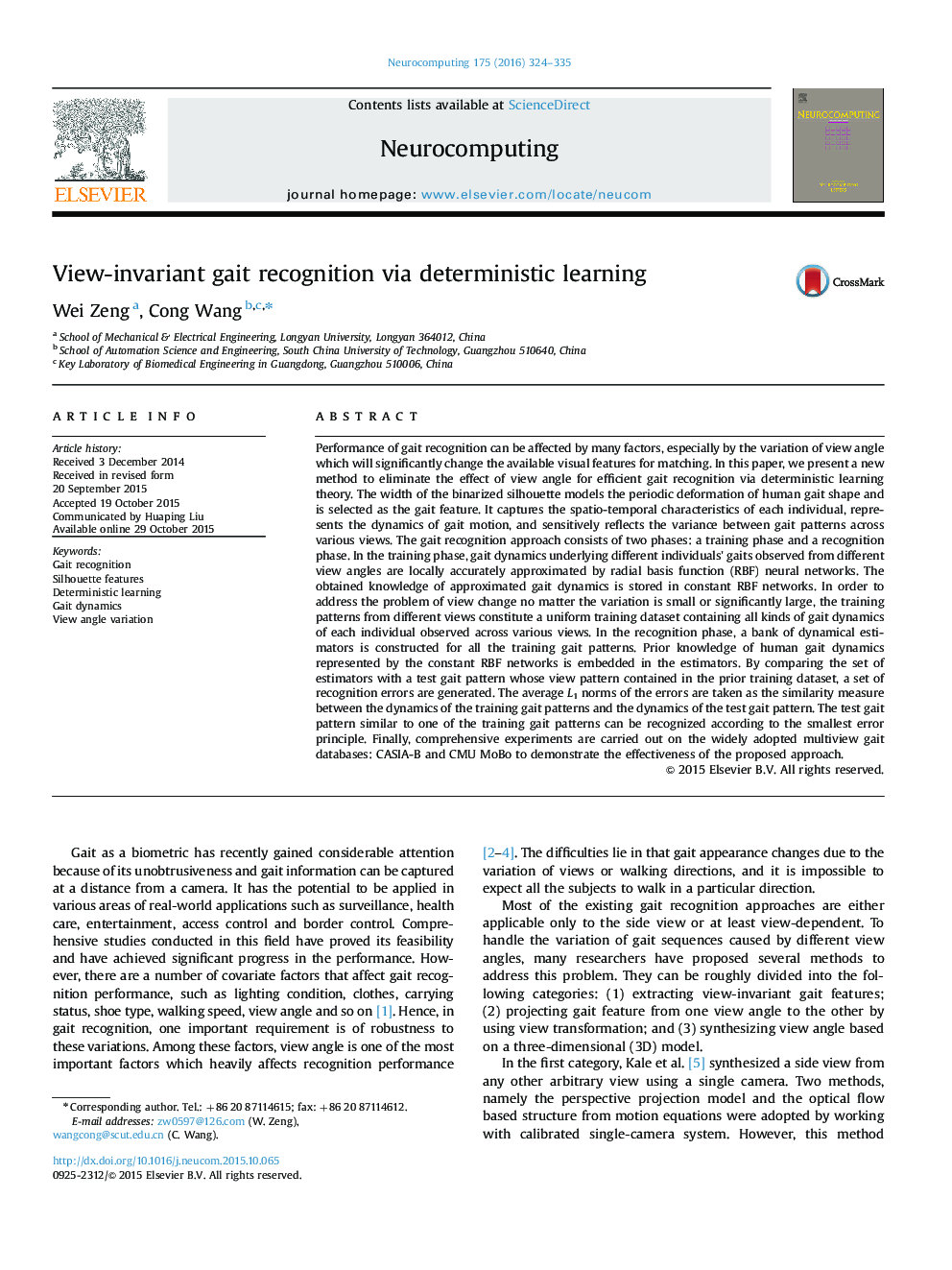| کد مقاله | کد نشریه | سال انتشار | مقاله انگلیسی | نسخه تمام متن |
|---|---|---|---|---|
| 407164 | 678130 | 2016 | 12 صفحه PDF | دانلود رایگان |
Performance of gait recognition can be affected by many factors, especially by the variation of view angle which will significantly change the available visual features for matching. In this paper, we present a new method to eliminate the effect of view angle for efficient gait recognition via deterministic learning theory. The width of the binarized silhouette models the periodic deformation of human gait shape and is selected as the gait feature. It captures the spatio-temporal characteristics of each individual, represents the dynamics of gait motion, and sensitively reflects the variance between gait patterns across various views. The gait recognition approach consists of two phases: a training phase and a recognition phase. In the training phase, gait dynamics underlying different individuals׳ gaits observed from different view angles are locally accurately approximated by radial basis function (RBF) neural networks. The obtained knowledge of approximated gait dynamics is stored in constant RBF networks. In order to address the problem of view change no matter the variation is small or significantly large, the training patterns from different views constitute a uniform training dataset containing all kinds of gait dynamics of each individual observed across various views. In the recognition phase, a bank of dynamical estimators is constructed for all the training gait patterns. Prior knowledge of human gait dynamics represented by the constant RBF networks is embedded in the estimators. By comparing the set of estimators with a test gait pattern whose view pattern contained in the prior training dataset, a set of recognition errors are generated. The average L1 norms of the errors are taken as the similarity measure between the dynamics of the training gait patterns and the dynamics of the test gait pattern. The test gait pattern similar to one of the training gait patterns can be recognized according to the smallest error principle. Finally, comprehensive experiments are carried out on the widely adopted multiview gait databases: CASIA-B and CMU MoBo to demonstrate the effectiveness of the proposed approach.
Journal: Neurocomputing - Volume 175, Part A, 29 January 2016, Pages 324–335
